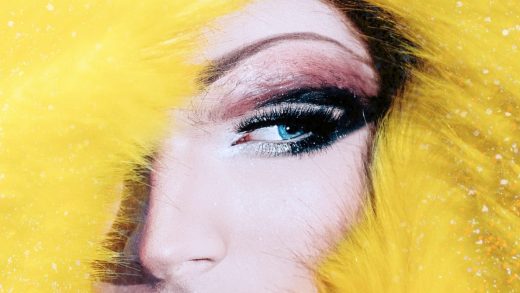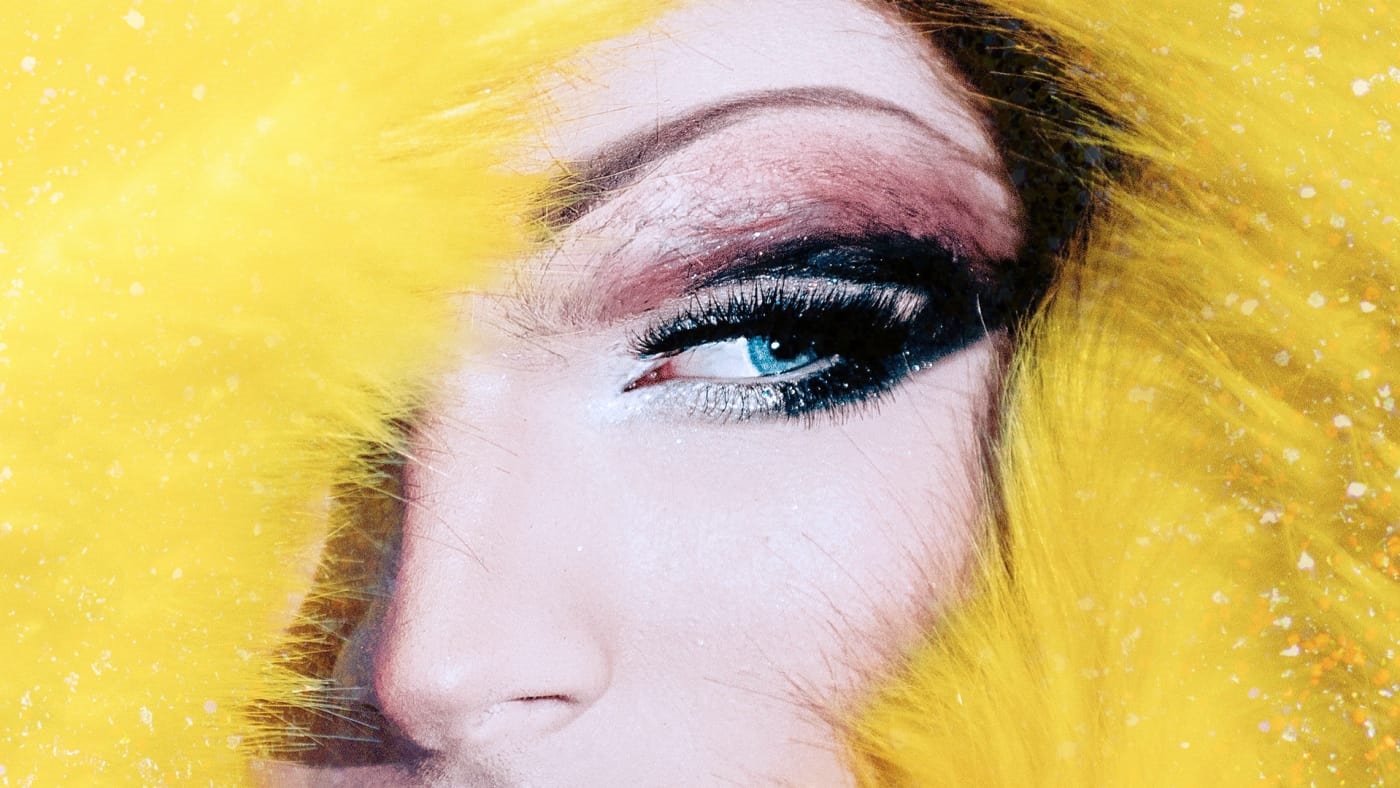Can the beauty industry make over the gender norms it created?
In 2013, U.K.-based makeup artist and influencer Joseph Harwood entered “The You Generation,” an online talent contest jointly hosted by Simon Cowell and YouTube. When Harwood, who identifies both as transgender and non-binary, went on to win the competition, the response from its organizers was disheartening. Harwood was informed that he’d won the contest and its $75,000 grand prize, but little publicity followed aside from a few tweets. He found this strange for a tournament that had stretched over the course of an entire year. In the end, Harwood claims, “I never got any follow-up interview posted, not even a video on YouTube” celebrating his win. He suspects that “they wanted ‘the girl next door’ to be the face of whatever marketing plan they had in the background.” (After repeated requests for comment YouTube referred Fast Company to Cowell, who was unavailable as of press time.)
Five years later, even casual observers of the beauty industry are seeing more faces like Harwood’s. Men still dominate the executive levels of large cosmetics empires, as they do in most industries, while women serve as their faces. (Revlon named its first woman CEO just last month.) But lately, male–as well as trans, genderqueer, and non-binary–beauty gurus are landing ad campaigns with CoverGirl and makeup collaborations with MAC Cosmetics. On Instagram, male-identified models and makeup artists draw millions of followers for splashy eye looks framed by thick, defined “Instagram brows,” a signature of the platform. And on YouTube, it’s hardly just cisgender women painting and pouting their lips in tutorials that clock millions of views. At Beautycon, the annual festival for beauty fanatics, the expertly painted influencers holding court on the pink carpet are anything but girls next door.
Related: Your guide to generation Z, the frugal, brand-wary, determined anti-millennials
Not your mother’s makeup counter
“The beauty industry at large has made strides toward becoming more diverse and inclusive,” Karalyn Smith, Sephora’s SVP of human resources, tells Fast Company. This month the cosmetics retailer is debuting complimentary in-store workshops for trans and gender-nonconforming customers. “I’m so proud that Sephora is being proactive about creating a more welcoming place for people of all backgrounds and needs,” she says.
But some customers might be forgiven for seeing the 49-year-old retailer as playing catch-up. The legacy cosmetics industry, once anchored by suburban-mall Lancôme kiosks and Vogue spreads, is adapting to a world where consumers get their beauty tips from gender-fluid YouTubers and RuPaul’s Drag Race–and buy their eyeshadow from brands native to this environment. One of them, Milk Makeup, which claims that 15% of its online customers identify as male, launched a campaign last spring meant to “blur the lines” between gender norms. Fluide, one of several newer brands catering explicitly to trans and non-binary customers, hired genderqueer writer and activist Jacob Tobia as the face of a recent campaign. Drag Race alumni and Viceland stars Trixie and Katya tout Sugarpill’s brightly hued wares on Instagram.
Smith notes that Sephora has a “large platform and a big voice in the beauty industry, enabling us to use our unique strengths to make a difference in our communities.” Other well-established brands, like MAC, which has been owned by Estée Lauder since 1998, have espoused inclusivity for decades. The company chose drag pioneer RuPaul Charles to head up an iconic 1994 campaign for its Viva Glam lipstick, for example, and tapped Caitlyn Jenner as the new spokesperson for the line in 2016, plus a 15-piece collection. (The choice provoked an outcry within the trans community for a few reasons, not the least of which was Jenner’s history as a vocal Trump supporter.) In recent years Maybelline and CoverGirl have both signed male ambassadors–Manny Gutierrez and James Charles, respectively–and Andreja Pejic, a model known for walking runways for both men’s and women’s collections, fronted a Make Up For Ever campaign in 2015, after undergoing gender confirmation surgery.
Harwood isn’t convinced these changes represent the peak of inclusiveness in the industry. “The face of beauty has kind of smudged out a lot of people that were gender-nonconforming or who were transgender,” he says (Harwood’s website notes that “he identifies with any pronouns, as long as they’re said with a smile”), with the upshot of reinforcing stereotypical femininity.
Back in 2015, Harwood shared the same management team as influencers like Gutierrez and Patrick Starr, the latter of whom has also collaborated with MAC on multiple cosmetics lines. Harwood claims that their agency tried to brand all three of them as the “new face” of “boys in makeup,” suggesting that makeup is still “for” women but that men can wear it, too–implicitly keeping those gender demarcations intact. “But I was never the ‘boy in makeup’ to begin with,” he says, “because it wasn’t my gender identity.”
Related: What it’s like to work at a cosmetics counter as a black trans woman in Mississippi
Change from within
Frustrations like Harwood’s are already having an impact. Millennial and Gen Z customers are the coin of the realm for beauty companies, much as they are for consumer brands generally. And as the industry has sought to reach them where they are (i.e., scrolling Instagram more likely than flipping through print magazines) retailers have tapped social media influencers to move product, ceding some of their own power in the process. Discerning customers don’t hesitate to call out brands for product-development foibles and demand that cosmetics lines mirror the diversity of skin tones and gender expressions that fill their social feeds.
“What we’re seeing in the beauty industry is [that] our customers are holding us more accountable, and I think that’s a really great direction to be going in,” Brandi Halls, director of brand communications at cosmetics retailer Lush, explains. “Businesses out there are serving the consumer, and if the consumer isn’t giving us feedback, how can we ensure that we’re representing them all?” Still, she adds, “Some companies are responding better than others.”
Striking the right tone can be tricky for many reasons. For one thing, there’s no strong consensus around what genuine inclusivity should look like in an intersectional world. When Rihanna released a makeup line with Fenty Beauty last year, for example, she declared it “for women of all shades, personalities, attitudes, cultures, and races.” But when pressed on why, given that mission, she didn’t include a trans woman in the campaign, Rihanna argued it wasn’t her business to inquire about models’ gender identities, lest that “be used as a convenient marketing tool.” “Too often I do see companies doing this to trans and black women alike!” she explained on Instagram. “There’s always just that one spot in the campaign for the token ‘we look mad diverse’ girl/guy! It’s sad!”
In addition, a company that hasn’t previously prioritized certain communities of consumers–say, a brand that largely features cisgender white women in its marketing–might appear disingenuous when it moves to become more inclusive. As the tech industry has also found, diversity in hiring can be crucial for navigating these shifts authentically. Halls notes that Lush’s trans employees pushed for the company’s recent trans rights and awareness campaign, for example. And according to Nancy Mahon, who heads up the MAC AIDS Fund (a nonprofit arm set up in 1994), a single staffer spoke up at a town hall. “I don’t understand why our tagline is ‘all sexes.’ It really should be ‘all genders’,” she recalls the employee saying. A few months later, MAC made the change. Its new tagline reads: “All Ages, All Races, All Genders.”
“I would like to see more queer people being represented not just in the campaigns that these brands are featuring, but behind the lens as well–as art directors, in management positions–because that would make those efforts come across as more genuine and authentic,” says Isabella Giancarlo, the founder of Fluide. “I think that would really be moving the community forward in a real way.”
Related: Brands still haven’t figured out how to talk to LGBTQ consumers
The many faces of authenticity
Until that happens, Giancarlo has found that niche brands like hers can carve out loyal audiences, fulfilling demand among trans and gender-nonconforming customers who are underserved elsewhere. Smaller labels also have more flexibility to live their values from production to marketing, she says, whereas larger brands are typically beholden to corporate overlords and slower to evolve. (Fluide makes its products in the U.S. and markets them as “cruelty-free”; MAC sells in China, where animal testing is required to bring beauty products to market.) And as a queer person, Giancarlo feels uniquely positioned to speak to her customer base. “I never saw beauty companies representing beauty in the way that I wanted to wear makeup,” she says. “In high school, I felt like I had to wear makeup to fit in. And it just kind of had this cultural gendered heaviness to it.”
That experience informs Fluide’s lineup, which focuses more on what Giancarlo thinks of as “entry-level” products like lipstick, glitter, and nail polish–products that are multipurpose and accessible. “A lot of gender-nonconforming or gender non-binary folks have complicated histories with makeup,” Giancarlo explains; for some, it’s less about using cosmetics to subvert gender norms than the freedom to embrace another set of them. That can be especially true for older people in those communities, who may be less immersed in the wide spectrum of gender expressions celebrated across Instagram and YouTube, let alone encounter a direct-to-consumer brand like Fluide. When those consumers walk into a department store or even a Sephora, chances are they’ll still be confronted mainly with images of cisgender women radiating conventionally feminine beauty.
This was a big reason why U.K.-based makeup artist Jessica Blackler, who often books older transgender clients, launched Jecca, a cosmetics brand whose first product is a color-correcting palette that can cover up beard stubble (plus under-eye circles and blemishes, she adds). “My clients felt like, ‘Okay, we’re in 2018 and we’re becoming more inclusive, but why should we support that?” Blackler says. Her clients worried that beauty brands’ shifts toward gender fluidity was superficial, merely “for trend purposes and marketing purposes,” not a reflection of a true desire “to support the problems and the struggles that the LGBT community still faces.”
To Blackler, Jecca’s ultimate reason for being isn’t to sell makeup, it’s to give back to its community of consumers–hopefully putting to rest those fears of exploitative marketing and superficial gestures of inclusivity generated by other brands. The company partners with an LGBTQ charity to which it also donates 5% of its profits. “We care enough to actually move the industry forward,” says Blackler, “rather than just jump onto it because everyone else is.”
(30)



